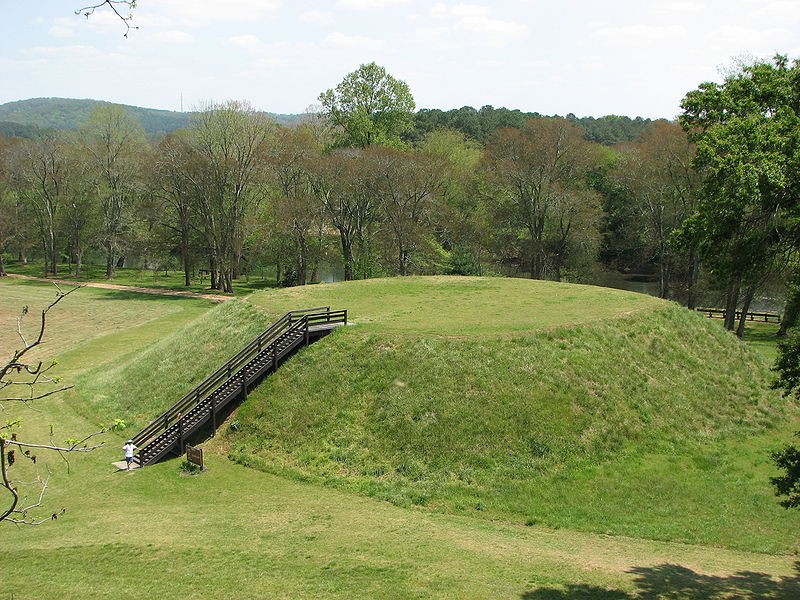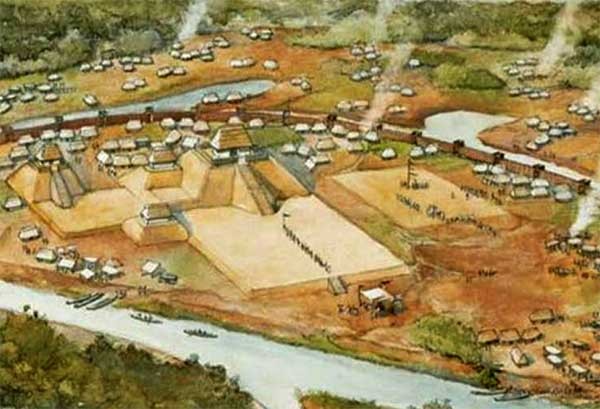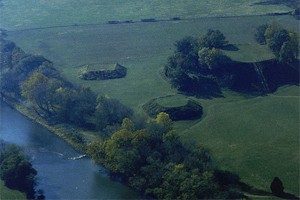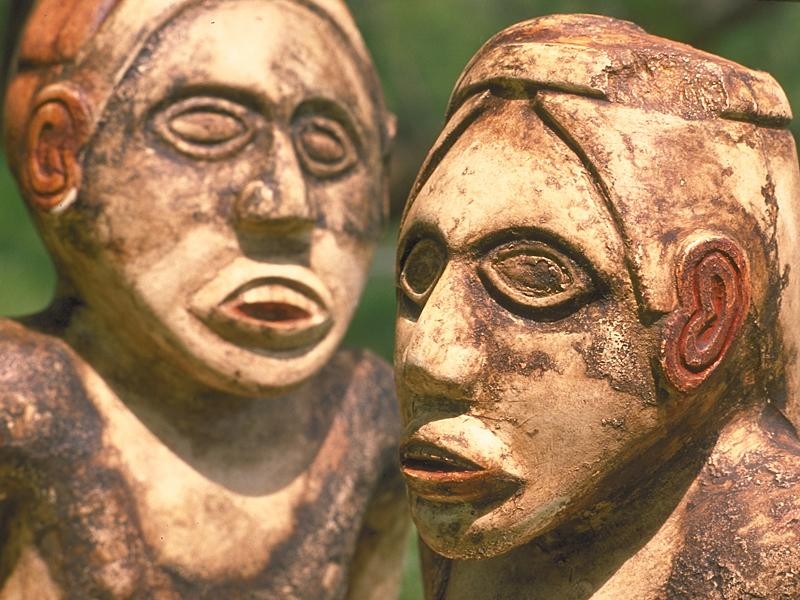Etowah Indian Mounds Historic State Park
Introduction
Text-to-speech Audio
Images
Etowah Indian Mounds Historic State Park features ancient Indian mounds dating to 1000-1500 A.D.

Painting of Etowah by Steven Patricia, 2004.

Aerial view of the Etowah Indian Mounds.

Image of the Two Marble Figurines unearthed in the excavation of Mound C. Courtesy of Georgia Department of Economic DevelopmentLarson, Lewis. "Etowah Mounds." New Georgia Encyclopedia. Last modified13 February 2013. Accessed August 29, 2016. http:

Backstory and Context
Text-to-speech Audio
Flourishing during the Mississippian Culture (1,000 A.D. to 1550 A.D.), the Etowah Indian Mounds is the most intact Mississippian Culture site in the Southeast. The Mississippian Culture was the last major cultural development in North America before the arrival of Europeans. Mississippians were horticulturalists who planted and tended gardens of a variety of crops. They lived in communities known as Chiefdoms. Chiefdoms consisted of several settlements with a centralized capital or chiefdom. Their society was divided into two groups: the elite and the commoner. (1)
The Etowah Indian Mounds reached its height around 1250 A.D. Adjust to the Etowah River, the Etowah Indian Mounds historic site covers 54 acres. Three prominent mounds are still visible; although, the site consists of six mounds altogether. The largest mound is more than 300 square feet at the base and rises to a height of slightly more than 60 feet. Buildings were erected on top of the mounds. The site has two plazas and public buildings. Residential housing surrounded the Mounds and plaza. In closing the town was a ditch and wooden palisades. (2)
Visitors can view the many artifacts uncovered in the archaeological excavation of Mound C in the museum. The museum shows how natives of this political and religious center decorated themselves with shell beads, paint, complicated hairdos, feathers and copper ear ornaments. Hand-carved stone effigies weighing 125 pounds still bear some original pigments. Objects made of wood, seashells and stone are also displayed. Of the many artifacts uncovered, the two Etowah marble figures are the most famous.
Sources
(1) Williams, David Salter. Mounds to Megachurches: Georgia's Religious Heritage. Athens, GA: University of Georgia Press, 2008
(2) Larson, Lewis. "Etowah Mounds." New Georgia Encyclopedia. Last modified February 13, 2013. Accessed August 29, 2016. http://www.georgiaencyclopedia.org/articles/history-archaeology/etowah-mounds.
Kåre Thor Olsen, via Wikimedia Commons: https://commons.wikimedia.org/wiki/Category:Etowah_Indian_Mounds
The Society for Georgia Archaeology: http://thesga.org/2009/04/2009-lesson-plan-now-available/
Courtesy of Adam King, New Georgia Encyclopedia: https://www.georgiaencyclopedia.org/file/6024
Courtesy of Georgia Department of Economic Development, via New Georgia Encyclopedia.
